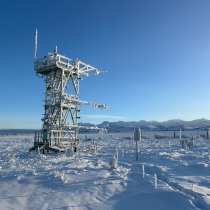Tracking a million trillion trillion unseen lives, with help
December 12, 2011
By Jacob Parnell
Even after more than a decade of working with microbes, I still find it amazing that more than 99% of the biodiversity on Earth is invisible. Microbes more than make up for their apparent invisibility by their sheer numbers and evolutionary versatility due to how long they have had to adapt to life on Earth. If I were to lay a timeline of Earth’s history that was the length of a football field (touchdown is today), humans would show up about an inch from the goal line, dinosaur domination would have come and gone between the 6 and 2 yard-line, and we would have to march almost 90 yards down the field (12.5 yards after the Earth formed) to see our world without microbes.
Since their appearance, microbes took the Earth by storm. Now they can be found in any environment capable of supporting life (and in some cases have redefined our concept of the limits of life). Given their ability to thrive in just about any environment, it should come as no surprise that microbes play an essential role in ecosystem function. Unfortunately, because of their size we don’t know a whole lot about what the microbes are doing, or even what specific microbes are in a given environment. Advances in DNA sequencing have spurred a new era in microbiology where we can finally answer some of the outstanding questions with respect to the role of microbial communities in the environment. The EMP (Earth Microbiome Project) is working with several other groups to standardize the way that DNA is analyzed from environmental samples. This is extremely important to me at NEON and to other global collaborative projects because standardized methods allow cross sample (in my case) and cross project comparison.
Currently there are hundreds of projects throughout the world that involve the sequencing of bacterial communities from environmental samples. EMP provides a set of metadata standards and a repository where this information can be stored and freely accessed by scientists, teachers, and students. In a recent meeting that NEON held in conjunction with the EMP, Dr. Rob Knight of the University of Colorado stressed the importance of shifting from the myopic approach of one sample in one environment at one given time to favor a view of how that sample fits into a global perspective. I agree with Dr. Knight that the days of examining a single microbial community without larger context are coming to an end. Dr. David Schimel reinforced the idea that our purpose at NEON is not only to fit our microbial community measurements into ecosystem-level processes, but also to link so many other measurements on an unprecedented scale to provide a continental perspective on the contributions of microbial communities to the ecosystem.
Drs. Jack Gilbert and Folker Meyer demonstrated the value of the EMP portal and other tools that would make any microbial ecologist drool (which by the way is loaded with microbes). They have already developed user-friendly models to compare communities for change over space and time and to investigate how microbes contribute to large-scale carbon and nitrogen cycles. The established standardized protocols adopted and practiced by EMP, their emphasis on open access to data, and the suite of tools developed through associated web-based portals make synergism between EMP and NEON natural. The next few years at NEON will be exciting for microbial ecologists to finally use the tools that have been developed to monitor how such important members of our ecosystem change over time and space. These measurements should provide unprecedented insight to how these ‘invisible’ microbes influence ecosystem processes. As the proverb says:
It’s not the towering sail, but the unseen wind that moves the ship.

